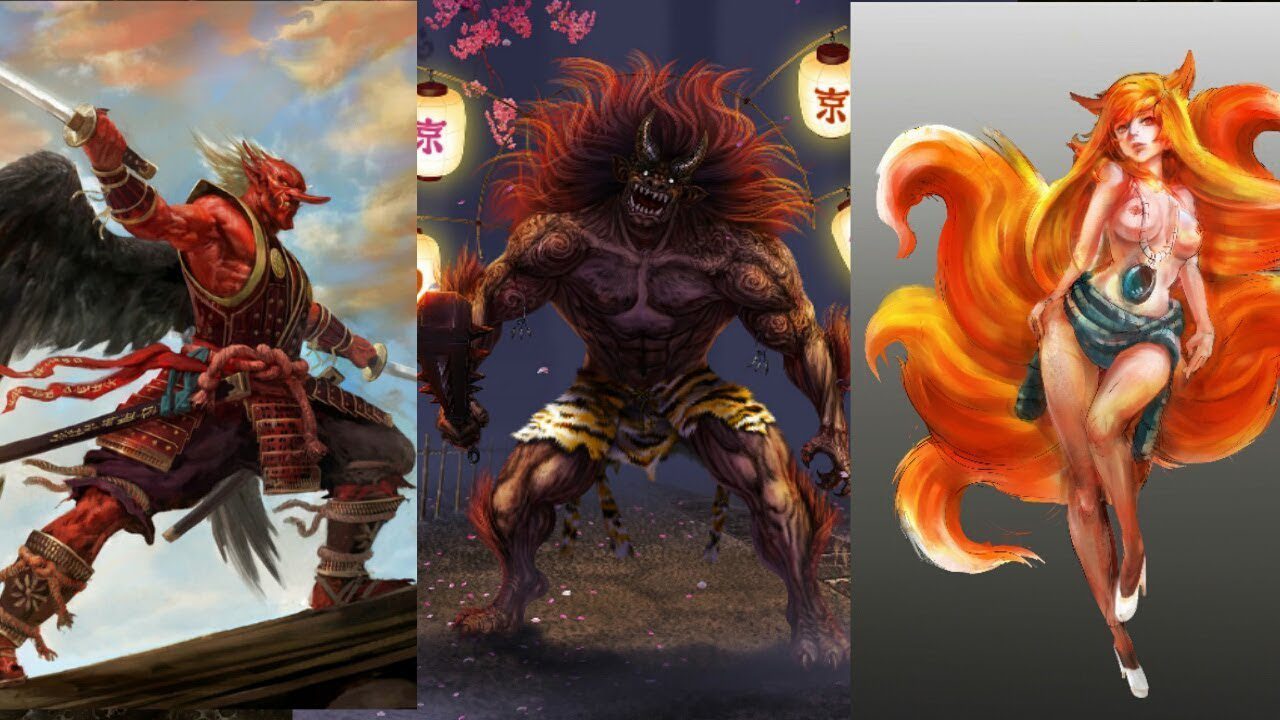Yokai are supernatural beings from Japanese folklore that inhabit the world. Kitsune, or fox spirits, are one of the most well-known yokai and are believed to have magical powers such as shape-shifting and illusion-making. Oni, or ogres, are often depicted as large, muscular, and ill-tempered creatures resembling demons that guard treasure or punish humans who commit sins. Tengu are bird-like creatures with humanoid features, including a long nose and wings, that are known for their flying abilities, powers of illusion, and fighting skills. Each yokai has its own unique traits, abilities, and associations that provide insight into Japanese culture and beliefs.
Comparing Japanese Yokai: Kitsune, Oni, and Tengu
Introduction
Japanese folklore is rich with supernatural beings, called yokai, that are believed to inhabit the world. Some of the most famous yokai include kitsune, oni, and tengu. These creatures have been portrayed in various forms of media, from traditional artwork to contemporary anime and manga. In this article, we will explore the characteristics, origins, and variations of these popular yokai.
Kitsune
Kitsune, or fox spirits, are one of the most well-known yokai in Japanese folklore. They are believed to have magical powers, such as shape-shifting and illusion-making. Kitsune are often portrayed as mischievous, but also as loyal and cunning creatures.
There are several variations of kitsune, depending on their traits and behavior. Some kitsune are benevolent and act as protectors, while others are malevolent and enjoy causing mischief. The color of a kitsune’s fur is also significant; a white-furred kitsune is seen as benevolent, while a black-furred kitsune is considered to be malevolent.
Kitsune are often associated with Inari, the Shinto god of fertility, agriculture, and foxes. Inari is also believed to have given the magical powers to kitsune.
Oni
Oni, or ogres, are another popular yokai in Japanese folklore. They are often depicted as large, muscular, and ill-tempered creatures that resemble demons. Oni are believed to live in the mountains and forests, where they guard treasure or punish humans who commit sins.
Oni are usually depicted with red or blue skin and wearing loincloths. They are also traditionally shown carrying kanabo, a spiked club used for battle.
Oni are often associated with Japanese folklore tales and legends, such as Momotaro and Urashima Taro. In these stories, the oni is portrayed as the antagonist, causing trouble for the protagonist.
Tengu
Tengu are a type of yokai that are believed to live in the mountains and forests. They are often depicted as bird-like creatures with humanoid features, including a long nose and wings. Tengu are known for their flying abilities, powers of illusion, and fighting skills.
There are several variations of tengu, depending on their traits and abilities. Some tengu are benevolent and act as protectors of the mountains, while others are malevolent and enjoy causing trouble.
Tengu are often associated with the religion of Shinto and Buddhism. They are also associated with the yamabushi, a religious group that practiced mountain asceticism.
Conclusion
Japanese folklore is filled with a wide range of yokai, each with their own unique traits, abilities, and associations. Kitsune, oni, and tengu are three of the most popular yokai in Japanese culture. While they share some similarities, such as their association with the mountains and forests, they also have distinct differences in their appearance and behavior. Understanding and appreciating these yokai can provide insight into Japanese history, culture, and beliefs.
